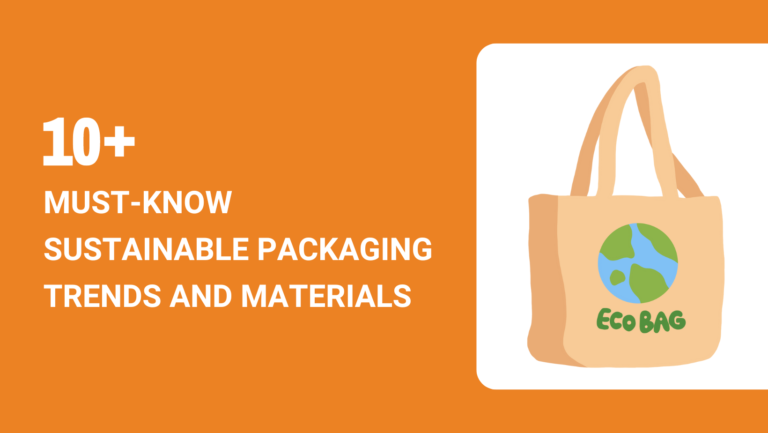With the environment high on the global agenda, businesses are rapidly shifting toward sustainable packaging options to meet the rising consumer demand for products that reflect a commitment to safeguarding our planet.
In 2024, understanding sustainable packaging and leveraging the latest trends in sustainability will be more than a badge of honor—it’s a necessity for your business’s vitality and integrity.
In fact, companies are now exploring innovative materials and designs that reduce waste, improve biodegradability, and use renewable resources, making sustainability in packaging a focal point for their brand’s environmental narrative.
This article has brought the top sustainable packaging trends in 2024 and beyond. You will learn a brief introduction to every trend and how to benefit from it in your business.
Let’s start.
Key Takeaways
- Sustainable packaging focuses on using renewable, biodegradable, and less wasteful materials.
- Businesses are developing innovative and environmentally friendly packaging solutions in 2024.
- The article presents a roadmap for integrating sustainable packaging trends into your business strategy.
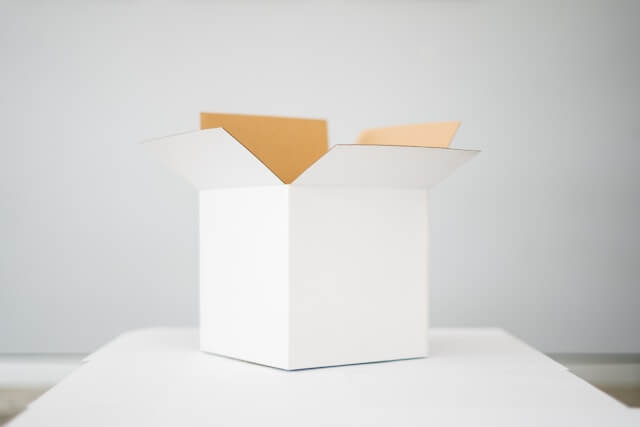
What Is Sustainable Packaging?
Sustainable packaging involves using materials and methods for packaging that are environmentally friendly and can be maintained without depleting natural resources or harming the ecosystem.
The most sustainable packaging options prioritize not just the end-of-life stage, where materials can be recycled or decomposed without damaging the environment, but also the production and distribution stages to minimize the overall carbon footprint.
Packaging sustainability focuses on the core principles of reducing, reusing, and recycling — often referred to as the 3Rs.
These principles aim to decrease the amount of waste created, encourage the use of reusable materials, and ensure products can be recycled to keep them out of landfills.
When you choose green sustainable packaging, you’re part of a movement toward greater environmental responsibility.
For instance, by using packaging made from recycled paper, you contribute to a reduction in deforestation and greenhouse gas emissions since recycling paper uses 70% less energy compared to making it from raw materials.
To put it in perspective, consider this comparison chart:
| Aspect | Sustainable Packaging | Traditional Packaging |
| Environmental Impact | Low; reduces waste and pollution | High; contributes to landfill and pollution |
| Energy Usage | Lower due to recycled materials | Higher with virgin materials |
| Costs | Can be higher initially | Lower upfront but costly environmentally |
| Consumer Perception | Positive; aligns with eco-conscious values | Increasingly negative; seen as harmful |
Incorporating sustainable packaging could significantly benefit your brand reputation and align with the values of your consumers.
Remember, when you’re exploring your packaging options, always consider the lifecycle analysis to assess the overall environmental impact — from production to disposal.
Top Sustainable Packaging Trends for 2024 (With Pros and Cons)
1. Corrugated Paper Boxes
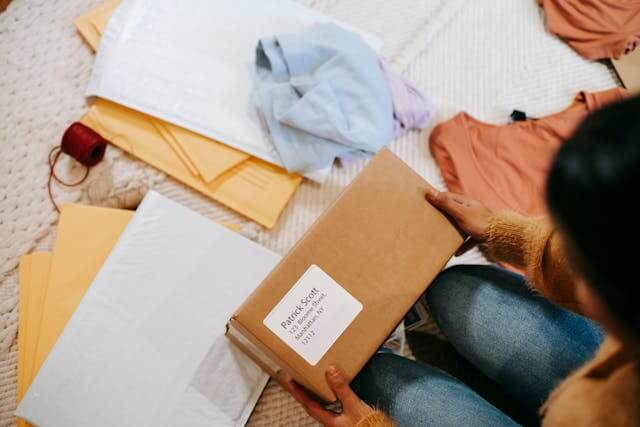
You may have seen corrugated paper boxes in e-commerce deliveries. Using these boxes is a top trend in the packaging industry and is likely to grow more in the future.
Corrugated paper boxes are made of eco-friendly materials such as cardboard, stone paper, bamboo paper, paper pulp, etc.
Pros
- Renewable Resource: Corrugated boxes are primarily made from paper, a renewable resource, with many coming from managed forestry initiatives.
- Highly Recyclable: The recycling rate for corrugated boxes is exceptionally high, often cited at over 80%, reducing the waste in landfills.
- Energy Efficiency: Many corrugated box manufacturers generate energy from the byproducts of the paper manufacturing process.
Cons
- Limited Durability: While improvements are being made, corrugated boxes can be susceptible to moisture and aren’t always suitable for heavy-duty packaging.
- Size Limitations: There may be constraints on box dimensions due to the production process, which can limit packaging options for larger items.
2. Sustainable Paper Bags
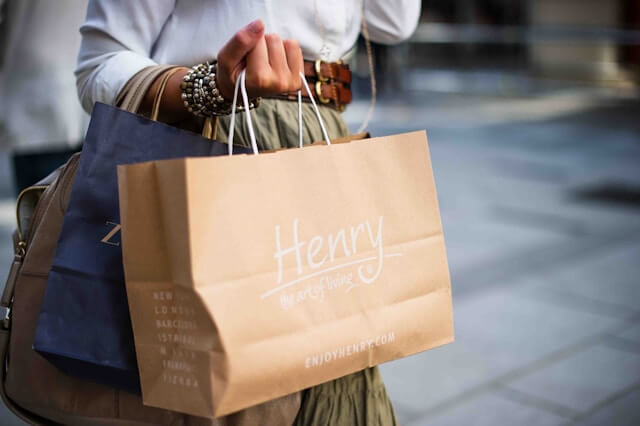
Smart businesses have also started delivering their products in paper bags. Be it a supermarket or an online store, you will see these paper bags almost everywhere.
These bags decompose easily and do not harm the environment. So, they are also trending on top for sustainable packaging.
Pros
- Biodegradability: Paper bags decompose much faster than plastic, reducing long-term waste in landfills.
- Recyclability: With a recycling rate of about 68%, paper bags can be repurposed more efficiently than many other materials.
- Resource Management: Paper bags often come from managed forests, which are replenished over time, making the resource renewable.
- Consumer Demand: A surge in consumer preference for sustainability leads to a positive brand perception when using paper bags.
- Energy Consumption: The production of paper bags generally requires less energy compared to their plastic counterparts.
Cons
- Durability: Paper bags can be less durable, especially in wet conditions, potentially limiting their reusability.
- Cost: The cost of production for paper bags can be higher, impacting the price for consumers and businesses.
- Weight and Space: Paper bags tend to be heavier and take up more space than plastic bags, leading to higher transportation emissions.
- Carbon Footprint: While better than plastic, the manufacturing process of paper bags still produces a carbon footprint that needs to be considered.
- Single-Use: Despite their eco-friendly materials, many paper bags are still designed for single-use, which doesn’t fully align with circular economy principles.
3. Sustainable Mailers
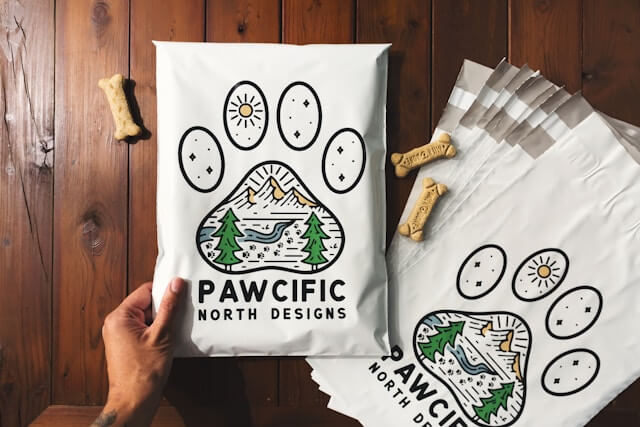
One of the latest and most effective packaging trends is packing products in a sustainable mailer. These mailers are not only sustainable but also visually appealing.
Most mailers are made of paper or any other eco-friendly material. You may also find mailers in sustainable plastic or recycled plastic.
Pros
- Reduced Carbon Footprint: Sustainable mailers typically use materials that are biodegradable, compostable, or recyclable, lowering the amount of waste contributed to landfills. For instance, PHAREGE offers a variety of kraft box mailers in different sizes, which support business customization needs while being environmentally responsible.
- Customer Approval: With a commitment to sustainability, mailers made from materials such as honeycomb paper bubble wrap can enhance brand reputation. As reported, a significant percentage of consumers pay more for sustainable products, linking to increased customer loyalty and a stronger brand image.
Cons
- Higher Upfront Costs: While investing in sustainable packaging can save money in the long run, initial costs can be higher than traditional options. This aspect may affect the financial planning of smaller businesses or startups that are already budget-constrained.
- Limited Availability: Certain types of eco-friendly materials might not be as readily available as conventional ones, potentially leading to supply chain challenges. This can pose risks for businesses that rely on consistent packaging availability for their products.
4. Minimal Packaging
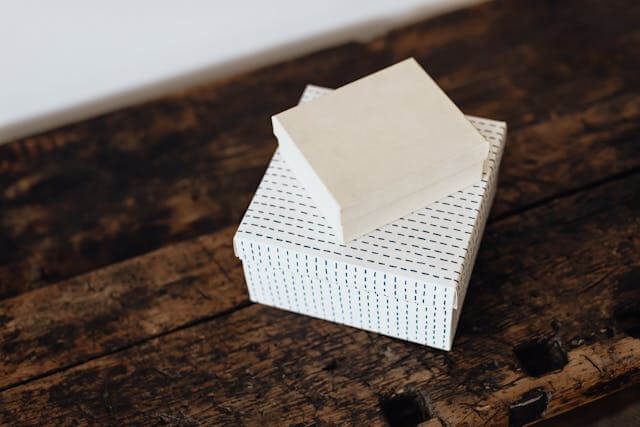
Sustainability is about using less or harming the environment as little as possible. So, responsible businesses have shifted to using minimal packaging.
This packaging trend utilizes as little packaging material as possible to avoid the harmful effects of packaging. Most minimal packaging keeps products exposed to the external environment so they stay fresh.
Pros
- Reductions in Waste: Your business can significantly decrease its environmental footprint by opting for minimal packaging. A striking example is the reduction in single-use plastics, directly correlated with maintaining healthier ecosystems.
- Cost Savings: You can enjoy a dual benefit—lower material costs and increased efficiency in logistics.
Cons
- Potential for Damage: Lighter packaging could mean less protection during transit, leading to a higher risk of product damage. It’s a balance that requires careful consideration and testing.
- Consumer Perception: There may be a challenge with consumer perception, as customers might equate less packaging with reduced product value. Communicating the ecological benefits becomes essential to combat this misconception.
5. Biodegradable Packaging

Biodegradable packaging refers to the type of packaging that is made of materials that degrade easily into the environment. Both biodegradable and sustainable packaging go hand in hand.
Biodegradable packaging can come in any form, size, or shape, including plastics too.
Pros
- Reduced Environmental Impact: By choosing biodegradable packaging, you actively contribute to lowering pollution levels. These materials degrade naturally, leaving no harmful residues. For instance, companies like Novamont create sealable and durable films perfectly suited for fruit and vegetable packaging; these are both compostable and biodegradable.
- Less Dependence on Fossil Fuels: A significant advantage of biodegradable packaging is the decreased reliance on non-renewable resources, which helps conserve our planet’s precious fossil fuels.
- Safe for Both Consumers and the Environment: Products such as those made by Bio4Pack not only offer net packaging for fruits and vegetables but also ensure that the materials are safe, posing no risk to your health or the ecosystem.
Cons
- Possible Higher Costs: Biodegradable options can be more expensive due to the processing and materials needed, making them less economical for small businesses or those with tighter budget constraints.
- Limited Availability: Some areas might have restricted access to a wide range of biodegradable packaging solutions, potentially limiting your ability to utilize these eco-friendlier options.
- Performance Concerns: Although organic materials are generally durable, they may not always perform at the same level as traditional plastics, especially in extreme conditions, which could be a limiting factor for certain products.
6. Compostable Packaging
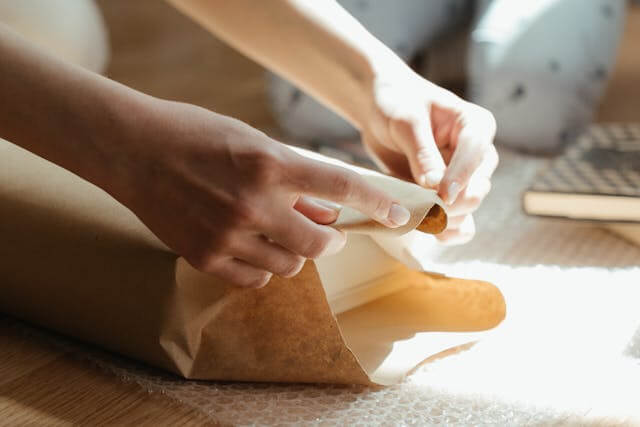
Compostable packaging goes a step further than biodegradable packaging. While biodegradable only decomposes in the environment, compostable packaging may even help the environment recover and improve its sustainability.
Just indicate the compostable nature of your packaging, and you will easily elevate your business’ respect in the long run.
Pros
- Reduction in Landfill Waste: When properly composted, these materials degrade and do not contribute to landfill mass, as reported by a Sustainable Packaging Coalition study.
- Low Environmental Footprint: They typically have a lower environmental footprint in terms of production and disposal, using less energy and water than conventional materials.
- Supports Waste Diversion: They can help divert organic waste from landfills, as compostable packaging can be disposed of along with food waste, helping to reduce cross-contamination in recycling processes.
Cons
- Limited Composting Facilities: Not all areas have industrial composting facilities available, which means that compostable packaging may not break down if not processed correctly.
- Confusion and Misuse: Consumers can be confused about how to dispose of compostable packaging correctly, which can lead to it ending up in landfills or contaminating recycling streams.
- Cost and Availability: Production costs can be higher for compostable materials, making products more expensive for consumers, and sometimes it is more difficult to source these materials.
7. Seed Packaging
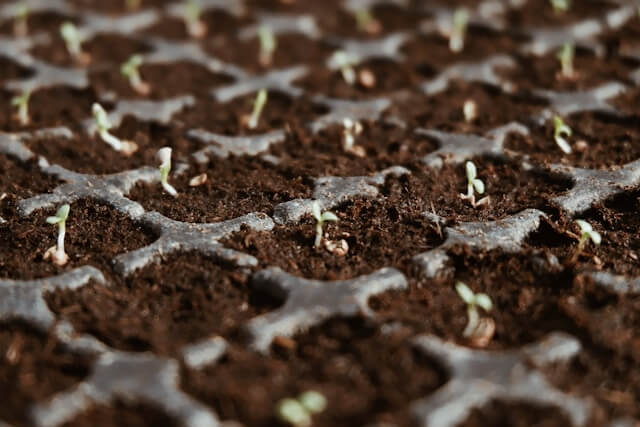
The most striking example of sustainable packaging is using seed bags. These bags can be made of degradable paper with plantable seeds infused inside them.
When a user throws the bag, the seeds naturally grow in that area with the right environmental conditions.
Pros
- Eco-Friendly: One of the primary benefits of seed packaging is its environmental advantage. This packaging is typically made from biodegradable materials that can be planted, leading to the growth of new plants. In fact, some seed packaging solutions even use post-consumer materials embedded with seeds, which later blossom into flowers or herbs.
- Consumer Engagement: Using seed packaging creates an interactive experience, which can increase consumer engagement with a brand. People are inclined to support brands with sustainable practices, and seed packaging offers a tangible way for consumers to partake in the eco-friendly movement.
Cons
- Limitations of Use: Despite its innovative approach, seed packaging is not suitable for all products. Its application is generally limited to small, lightweight items due to the delicate nature of the embedded seeds.
- Higher Costs: The production of seed packaging can be more costly than conventional packaging. The materials and process needed to ensure the seeds remain viable until planting can add to the expense. Companies also need to continually invest in R&D to sustain the viability of the seeds used in packaging.
8. Recyclable Packaging

Recyclable packaging is made of recyclable material. The most common recyclable materials are cardboard, paper pieces, and waste from food, vegetable, plants, etc.
Packaging made of recyclable material is environment-friendly and easily degrades in less time. Some recyclable packaging made of recyclable material like plastics is re-processed to be used again. That’s why people also call it reusable packaging.
Pros
- Reduced Environmental Impact: Recyclable packaging significantly lowers the consumption of raw materials, leading to a reduction in carbon footprint.
- Economic Efficiency: Companies often incur cost savings through the use of recycled materials, as they can be cheaper than virgin materials.
- Consumer Appeal: Given that 74% of consumers are willing to pay more for sustainable packaging, recyclable options are becoming a competitive advantage.
Cons
- Contamination Risks: Sometimes, recyclable materials can become contaminated, making them unsuitable for recycling.
- Limited Recyclability: Not all packaging labeled as recyclable can be processed by local facilities. This discrepancy can lead to consumer confusion and improper disposal.
9. Fabric Packaging

The trend of using fabric to pack products has been gaining momentum recently. Although this packaging is not widely adopted in the packaging industry yet, it is still one of the most efficient sustainable packaging methods.
Most fabric packaging is breathable, so the products inside the packaging stay fresh.
Pros
- Reduced Environmental Footprint: Fabric packaging is typically made from renewable resources like cotton, hemp, or jute, which have a lower carbon footprint compared to synthetic materials.
- Reusability: These packaging options are designed for multiple uses, translating to fewer resources needed over the product’s lifecycle.
- Biodegradability: Unlike plastics, natural fabric packaging can biodegrade in a compostable environment, easing landfill pressures.
- Brand Image: Employing fabric packaging can enhance brand reputation, as consumers are increasingly drawn to companies with strong environmental ethics.
Cons
- Higher Initial Costs: Natural fabrics typically carry a higher price tag than traditional packaging materials, which may be a barrier for some businesses.
- Durability Concerns: Depending on the type of fabric and use case, some fabric packaging might not be as durable as plastic counterparts, potentially limiting its use for certain products.
- Maintenance: Fabric requires cleaning between uses, which can present logistical challenges for companies and consumers.
- Limited Protection: While fabric is great for certain products, it might not offer the same level of protection as plastics, particularly for fragile items.
10. Glass Packaging

Glass packaging is another trending packaging design. Some products need to be visible even if packed inside glass packaging. This packaging mostly comes in a transparent form.
Adopting this packaging may cost you a little more, but your customers will love it.
Pros
- Fully Recyclable: Glass packaging can be recycled indefinitely without loss of quality. This makes it a champion of the circular economy, reducing the need for new raw materials and the energy spent on production.
- Non-toxic and Inert: Since glass does not react with its contents, it is ideal for storing food and beverages, ensuring that your products remain pure and uncontaminated.
- Transparency: Glass containers allow consumers to see the product inside, adding aesthetic value and possible reduction in food waste due to better visibility of contents.
Cons
- Weight: Glass is heavier than many other packaging materials, which can lead to higher transportation costs and increased carbon footprint.
- Fragility: Glass can break easily if not handled properly, creating potential safety hazards and increasing waste if not recycled.
11. Jute Bags
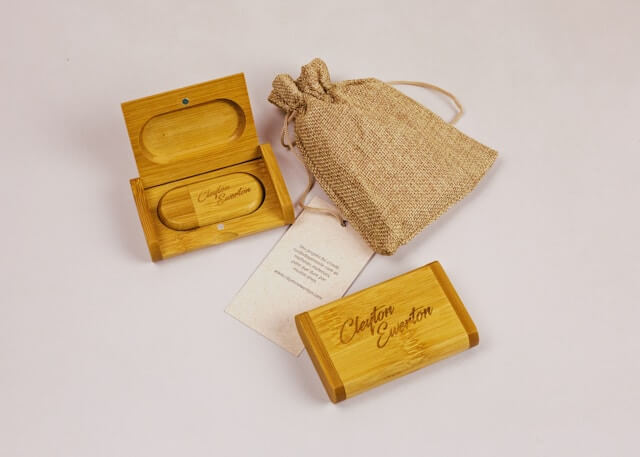
Jute bag is made from the extracts of a jute plant. It is durable, strong, and eco-friendly. Packaging bags made from jute are highly popular and trending in sustainable packaging trends.
The bag looks like it is made of fabric and is used to carry food and other stuff. It is also used in e-commerce business.
Pros
- Biodegradable: Jute bags naturally break down, leaving a minimal environmental footprint. A key jute industry trend has shown the market value of the industry likely to exceed $4.4 billion by 2026, indicative of its growing appeal.
- Durable: These bags are sturdy and can be used repeatedly, reducing the need for single-use plastics.
- Customizable: Jute’s flexibility allows for diverse design options, which businesses can leverage for brand promotion.
- Sustainable Harvesting: Jute plants have a low carbon footprint and help in soil conditioning, making the raw material highly sustainable.
Cons
- Limited Water Resistance: Jute fabric absorbs moisture, which can limit its use in certain applications unless treated for water resistance.
- Coarse Texture: The natural roughness of jute might not be suitable for all packaging needs and can require additional lining or modification.
Best Sustainable Packaging Strategies and How to Implement Them in 2024
1. Automation in Packaging
With the packaging industry seeking more sustainable solutions, automation has become a key innovation driver.
By integrating advanced technologies, automation streamlines the supply chain, improves management efficiency, and provides scalable solutions to meet growing demands.
How to Implement It
To successfully implement automation within your packaging line, assess the current technological framework of your operations.
Begin by identifying repetitive tasks that could be automated to improve speed and reduce waste. Next, consider the software and machinery that fit your specific needs.
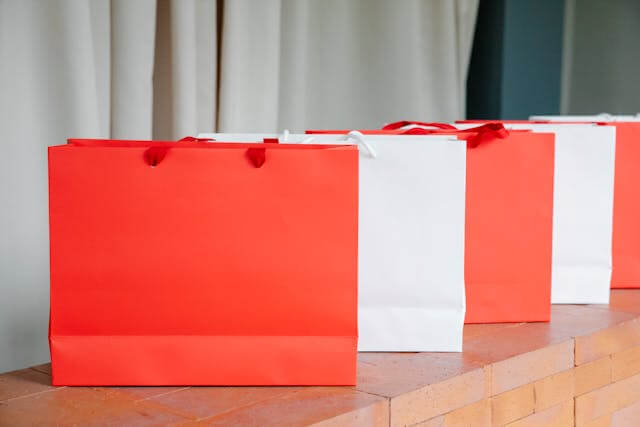
- Evaluate Your Needs: Look over your production line to determine which processes could benefit from automation.
- Choose the Right Technology: Research and select the equipment that can handle your specific packaging types and materials.
- Partner with Suppliers: Collaborate with reputable suppliers who have a track record in delivering efficient automation systems.
- Training: Ensure that your staff receives proper training on the new automated equipment to maximize productivity.
2. Flexible Packaging
In the landscape of sustainable packaging, flexible packaging emerges as a dynamic solution for businesses looking to reduce their environmental impact.
This packaging type has seen increased adoption due to its ability to minimize material usage and its lightweight nature.
How to Implement It
To begin integrating flexible packaging into your operations, start by assessing your product range to determine which can make the switch without compromising protection or quality.
Here’s a structured way you might consider:
- Evaluate Product Needs: Certain products might benefit from flexible packaging more than others. For example, snacks or items that are consumed in multiple sittings are ideal candidates for resealable flexible packaging.
- Partner with Suppliers: Engage with sustainable flexible packaging providers to find the best materials that align with your sustainability goals, like bioplastics or recycled content.
- Consumer Education: Ensure that your customers understand how to properly dispose or recycle the flexible packaging. This might involve clear on-package communication or a section on your website detailing the disposal process.
- Consider End-of-Life: Choose recyclable or biodegradable materials. Companies are now leveraging packaging that meets the demand for recycling design.
- Test and Learn: Start small with a pilot program to gather data and feedback before a full-scale rollout, which allows you to refine your approach based on consumer insights and performance.
3. Reduction and Replacement of Plastics
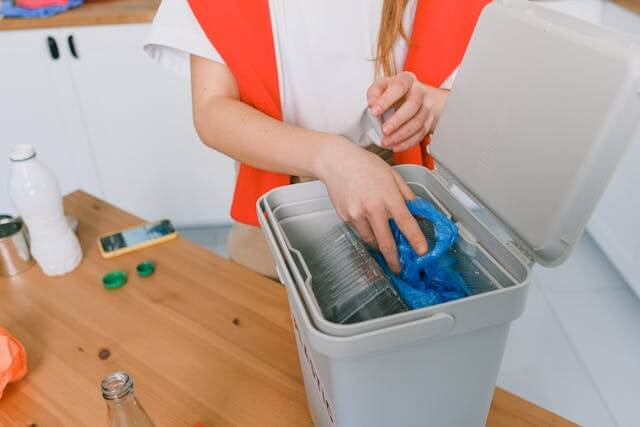
The shift towards more sustainable packaging involves significant changes in how materials, especially plastics, are used and managed.
Your business can play a part in this eco-conscious movement by reducing the use of plastics and opting for alternative, biodegradable materials or increasing the recyclability of the used plastics.
It’s about taking meaningful steps to protect the environment without compromising on packaging quality or functionality.
How to Implement It
To start reducing and replacing plastics in your packaging, first assess the current use of plastic in your product packaging.
Identify opportunities for reducing plastic thickness or volume, and consider substituting with materials like recycled paper, cardboard, or bioplastics.
For example, a major trend is to use packaging that is both made of recycled materials and itself more easily recyclable, contributing to a circular economy.
Incorporating recycling-friendly design principles can also play a vital role. Design for recycling means creating packaging solutions that can be easily disassembled and sorted, facilitating higher recycling rates.
Some companies are transitioning to mono-material packaging, which is made from one type of plastic, making it more straightforward to recycle than multi-material counterparts.
Educating consumers about the recyclability of the packaging is another critical component. You can include symbols or instructions that clarify how customers can recycle the packaging after use.
Actively promote and communicate your sustainability practices, as this can resonate strongly with the current market’s environmental concerns, thus potentially increasing brand loyalty and customer retention.
4. Post-Purchase Packaging Interaction
Understanding post-purchase packaging interaction is pivotal for businesses aiming to advance in sustainable packaging trends of 2024.
This approach transforms packaging from a mere container to an ongoing engagement tool — leveraging it to foster a relationship between the brand and the consumer post-sale.
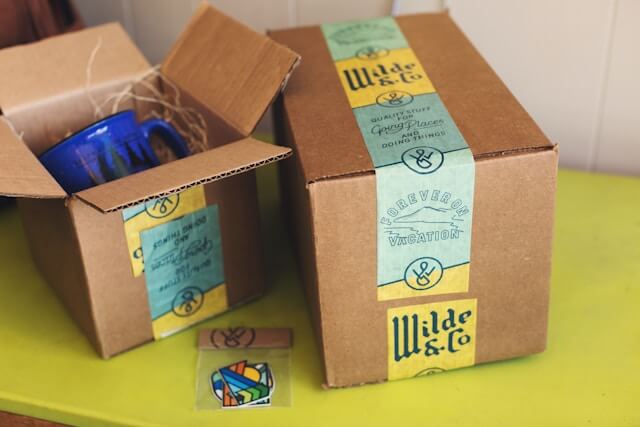
How to Implement It
To commence your journey in post-purchase packaging interaction, you should first integrate QR codes or NFC chips into your packaging. These elements can direct your customers to a digital platform for several post-purchase possibilities, such as:
- Product authentication
- Recycling instructions
- Customer feedback collection
- Exclusive loyalty rewards
- User manuals or how-to guides
A compelling example is the introduction of QR codes on packaging, which has augmented both user engagement and sustainability efforts.
As reported, companies have embraced the opportunity to educate consumers on recycling practices and brand stories through these scannable codes.
To effectively put this into action, your digital platform must be mobile-friendly and the content you provide should offer genuine value beyond mere marketing.
It’s also wise to track interaction data to gauge the effectiveness of these features and iteratively improve the user experience.
Businesses that have successfully employed this strategy have seen a considerable increase in customer engagement and retention rates.
Incorporating these features reflects a commitment to sustainability by actively involving customers in the product’s lifecycle and fostering responsible consumption habits.
5. Space Optimization
In 2024, one of the top sustainable packaging strategies is space optimization. This approach is essential for reducing waste and minimizing environmental impact.
How to Implement It
To initiate space optimization in your packaging, begin by evaluating your current packaging design. Look for ways to reduce the size and volume of the packaging while still protecting the product.
You can employ lightweight, strong materials to safeguard your items during transit. For example, companies like Paramount Global utilize techniques to make packaging that’s easy to stack and store.
Introduce designs that conform more closely to the size and shape of your products. This strategy not only conserves material but also allows for better shipping efficiency.
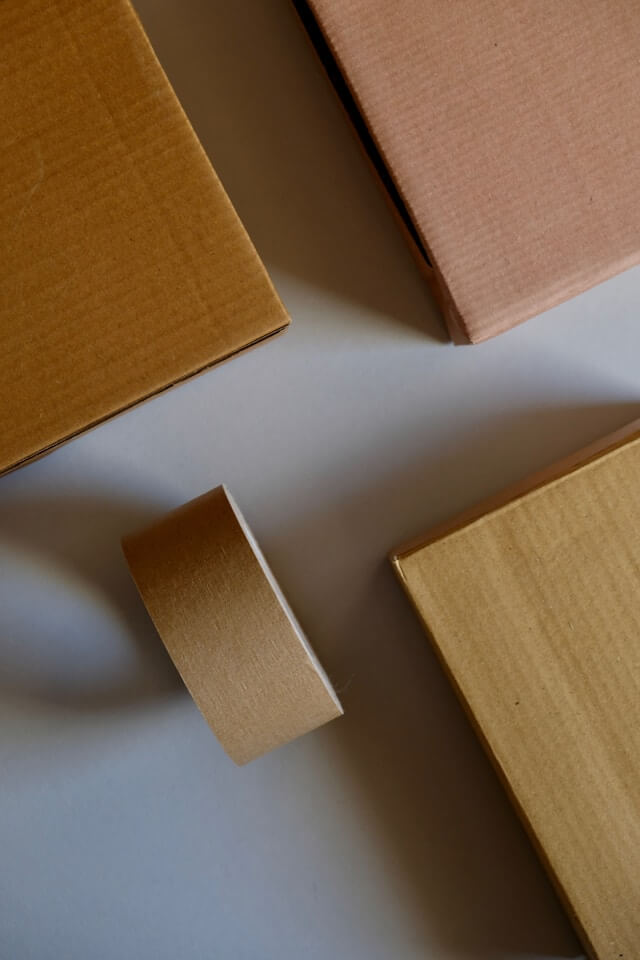
With fewer empty spaces in boxes, you can fit more products onto a delivery truck, reducing the number of trips needed and the associated carbon emissions.
Lastly, educate your team and customers about the benefits of space-efficient packaging.
By understanding that efficient use of space leads to sustainability gains, customers are more likely to appreciate simplified packaging and contribute to a circular economy.
6. Reverse Vending and Supply Chain
Reverse vending is becoming a crucial link in the sustainable packaging supply chain, offering a clear path for both consumers and businesses to be part of the recycling loop.
By incentivizing the return of used packaging, reverse vending machines (RVMs) not only support recycling efforts but also contribute to a more efficient supply chain.
How to Implement It
Adopting reverse vending machines into your supply chain can be a transformative step. First, assess your current packaging and waste management practices.
Then, consider the specific needs of your consumers – convenience will be essential for higher return rates. Partnering with manufacturers of RVMs can also offer insights into how to integrate these systems seamlessly into your operations.
For example, European countries with deposit return systems see return rates between 85 percent to 98 percent, partly due to the convenience and ubiquity of RVMs.
In these models, consumers are rewarded for returning packaging, usually in the form of vouchers or refunds, which encourages the continual looping of materials back into the supply chain and bolsters recycling rates.
To set up reverse vending in your business, start with a pilot program in a high-traffic area. Monitor usage data and consumer feedback to refine the collection process.
Partnering with local recycling facilities can help ensure that the materials collected are processed efficiently.
By focusing on reverse vending, businesses can take a proactive role in reducing waste, offering consumers a direct way to participate in sustainability efforts, and possibly cutting costs long-term by reclaiming materials that can be reused or recycled.
This ties back directly to the supply chain, making it more circular and less wasteful, which is a key trend for sustainable packaging in 2024.
What Are the Sustainable Packaging Materials Trends?
1. Cornstarch
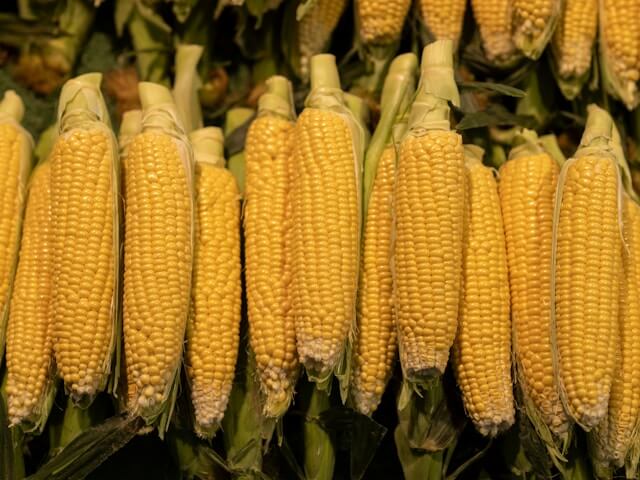
Using cornstarch in designing packaging material has been an upward trend for the last few years. You would mostly see food brands using this type of packaging material.
It is made of natural corn or maize waste and is safely biodegradable. So, you may consider using this sustainable packaging trend for your business.
How to Benefit from This Trend?
To leverage the benefits of cornstarch packaging, consider assessing the extent of your current packaging’s environmental impact.
Cornstarch options decompose far quicker than conventional plastics, often breaking down within months under the right conditions. This quick decomposition rate can be a key selling point for your eco-friendly product range.
For e-commerce businesses, transitioning to cornstarch packaging can differentiate your brand, align with your sustainability values, and cater to a growing customer base that values environmental stewardship.
Furthermore, by investing in sustainable packaging, you may reduce waste disposal costs in the long-term, given the material’s biodegradability.
2. Cellulose-Based Materials
Cellulose is a type of polymer used to make sustainable plastic. This material is made from wood, pulp, hemp, and plant extracts. So, it turns out to be fully biodegradable.
A few biodegradable materials leave some amount of toxicity in the environment. Cellulose materials are purely non-toxic, hence promoting better sustainability.
How to Benefit from This Trend?
To tap into the benefits of cellulose-based materials, consider the following:
- Evaluate your current packaging solutions and determine where cellulose-based options can be integrated.
- Source from suppliers that use sustainably managed forests to ensure your packaging is part of a responsible lifecycle.
- Design packaging with recycling in mind, utilizing cellulose materials that are compatible with existing recycling infrastructure.
By switching to cellulose-based packaging, you can significantly reduce your carbon footprint and showcase your brand’s commitment to sustainability.
A USDA report on sustainable packaging highlights wood fiber-based materials as a key component in the future of eco-friendly packaging applications.
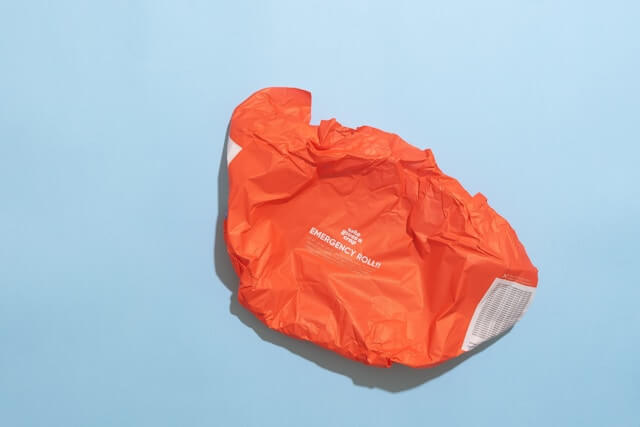
Furthermore, these materials are gaining popularity due to their versatility, as outlined in a ScienceDirect article, emphasizing the growing global market for sustainable packaging solutions.
Your customers will appreciate the move towards a greener packaging alternative, as many are now selecting brands based on their environmental values. With the right strategy, your transition to cellulose-based materials can be both smooth and profitable.
3. Mushrooms
Mushrooms are made of mycelium, which is abundant in agricultural areas. It is one of the most important agricultural wastes that serves as a raw material for sustainable packaging.
Since it is an organic substance, it decomposes fully within a few days. Mushrooms make plastic packaging and provide a cushioning effect to the product inside the packaging.
How to Benefit from This Trend?
To leverage this trend, understand that mushroom packaging uses mycelium, the root structure of mushrooms, to create durable and compostable packaging solutions.
The material is grown using agricultural waste, which means it not only addresses plastic pollution but also utilizes waste that would otherwise contribute to landfill mass.
By adopting mushroom packaging, businesses can highlight their commitment to sustainability, potentially attracting the 67% of consumers who prefer eco-friendly packaging.
Recent studies have demonstrated that mushroom packaging markets are estimated to increase to $56.1 million in 2024 with continued growth expected.
Engaging with this trend may involve partnering with reputable suppliers that specialize in mycelium-based products, such as Ecovative’s Mushroom® Packaging, to replace traditional packaging materials.
Embracing mushroom packaging can also be a strategic business move as this material has the potential to decompose within 45 days, and companies such as Magical Mushroom emphasize that their products can last up to 30 years if kept dry.
This dual longevity and compostability present a significant advantage over conventional plastics that remain in the environment for centuries.
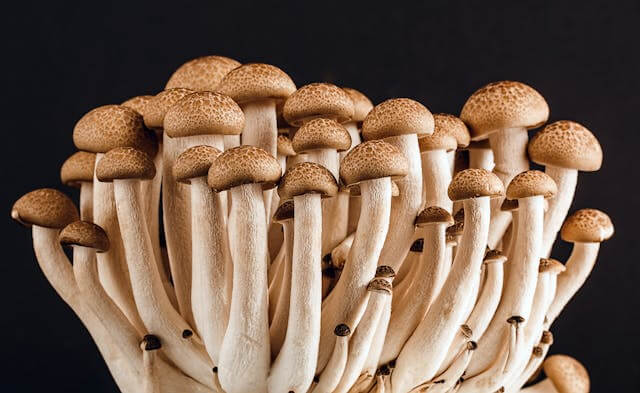
To facilitate a smooth transition to mushroom packaging, here’s a straightforward comparison chart of the pros and cons of using mushroom-based materials:
| Pros | Cons |
| Fully compostable and breaks down quickly | Initial adoption costs may be higher than traditional packaging |
| Made from renewable resources | Limited availability compared to plastic options |
| Can be grown into custom shapes and sizes | May not yet be suitable for all product types |
| Reduces dependence on fossil fuels |
4. Paper Fillers
Paper waste is also used inside the packaging to ensure the safety of the products. Instead of using other fillers that may incur additional costs to your packaging, you can use paper to replace them.
How to Benefit from This Trend?
To maximize the advantages of paper fillers in your packaging, focus on source reduction. By substituting traditional plastic packing materials with paper, you reduce the volume of non-recyclable waste.
Additionally, paper fillers offer excellent cushioning properties, keeping your products safe during transport with less material used.
Evaluate the supply chain to find areas where you can integrate paper fillers, such as void fill in shipping boxes or in protective wraps.
An example is using shredded paper as a substitute for bubble wrap. For larger-scale implementations, consider investing in equipment that produces paper fillers on-site, saving on shipping costs and storage space.
Calculate the impact of switching to paper fillers with these easy steps:
- Assess current packaging materials: Look at the volume and types of non-biodegradable fillers you use.
- Calculate material costs: Determine how much you spend on these materials and their disposal.
- Research paper filler options: Find suppliers and compare costs, keeping in mind potential long-term savings and environmental impacts.
- Estimate transition costs: Consider the initial investment for new materials or machinery.
- Project environmental benefits: Quantify the reduction in your carbon footprint and waste production.

This comparison chart can help you weigh the benefits:
| Feature | Traditional Plastic Fillers | Paper Fillers |
| Biodegradability | No | Yes |
| Renewable Source | No | Yes |
| Cost | Variable | Often lower |
| Waste Production | High | Low |
5. Sustainable Ink
Printing on the packaging is often ignored when discussing sustainability. Harmful printing also plays a role in hurting the environment. So, using sustainable ink is the latest trend to protect the environment.
Common sustainable inks include water-based, algae, UV, and vegetable inks.
How to Benefit from This Trend?
Embracing sustainable ink for your packaging needs can provide a competitive edge. Here are a few ways to adopt this trend:
- Mono-Material Focus: Target a shift towards mono-materials to simplify recycling processes. The industry’s projected growth at a 3.9% CAGR by 2025 suggests a move towards materials that endorse sustainability both in consumption and cost-effectiveness.
- Circular Economy Alignment: Opt for inks that meet the requirements of a circular economy. The demand for such products has increased, verified by insight from Siegwerk shared on Ink World that indicates sustainable inks and coatings as one of the key drivers in the industry.
- Consumer Preference: Leverage consumer-driven demand for sustainable products. As per Shane Bertsch of INX International Ink Co. via Packaging Strategies, inks play a pivotal role in the push for more sustainable packaging driven by consumer demand.
- Regulatory Compliance: Ensure compliance with environmental regulations, choosing inks that avoid harmful chemicals and minimize volatile organic compound (VOC) emissions.
6. Bio-Based Plastics
As we navigate through an era where sustainability is not just appreciated but expected, bio-based plastics emerge as a notable forefront in the packaging industry.
With the ability to derive from renewable resources, these plastics present a significant stride toward reducing environmental impact.
They currently represent about 1 percent of annual plastic production, though projections expect them to scale up to 2.43 million tons by 2024.
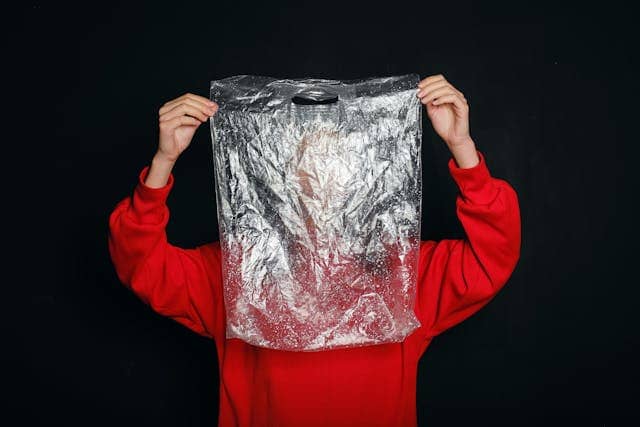
How to Benefit from This Trend?
To leverage the benefits of bio-based plastics, it’s essential to understand their properties and suitability for different types of packaging.
They offer valuable advantages like recyclability and biodegradability, which can resonate well with eco-conscious consumers.
Industry insights reveal that the demand for sustainable packaging options is growing, as businesses and individuals seek to make responsible choices.
Adopting bio-based plastics can distinguish your business as a leader in sustainability through practice and narrative.
It’s vital to perform a life-cycle analysis to weigh the environmental benefits against potential challenges, such as costs and the transition from traditional plastics.
Efforts to optimize the use, lifecycle, and recycling of bio-based plastics can maximize their environmental benefits, presenting your brand as a proactive player in the shift towards a circular economy.
Incorporating bio-based plastics into your packaging strategy can align your products with the ongoing trend towards environmentally responsible materials, potentially enhancing your brand image and appeal to a growing market of environmentally conscious consumers.
FAQs about Sustainable Packaging Trends
When exploring sustainable packaging, it’s imperative to address common inquiries that can help you make well-informed decisions for your business’s packaging needs.
What Is the Most Sustainable Form of Packaging?
The most sustainable form of packaging is typically made from materials that have minimal environmental impact, such as recycled paper and bioplastics produced from renewable resources.
These materials not only come from responsible sources but can also be recycled or composted after use.
What Is the Future of Eco-Friendly Packaging?
The future of eco-friendly packaging is moving towards innovation in biodegradable materials and advanced recycling processes.
Efforts to reduce packaging waste involve smart designs that are more efficient, requiring less material while maximizing recycling rates.
What Is the Difference between Sustainable and Compostable Packaging?
Sustainable packaging refers to environmentally friendly practices throughout the package’s life cycle, marrying economic and social factors with minimal environmental impact.
Compostable packaging, on the other hand, is designed to break down into non-toxic components in a composting setting, contributing to soil health.
What Are the Common Packaging Trends That Are Not Sustainable?
Common unsustainable packaging trends include the use of single-use plastics that are difficult to recycle and products with excess packaging layers.
Packaging with mixed materials that are hard to separate also presents challenges for recycling.
Is It Expensive to Use Sustainable Packaging?
While the initial cost of sustainable packaging materials can be higher, they can lead to long-term savings and add value to a brand.
Consumers are increasingly drawn to brands that demonstrate a commitment to the environment, potentially leading to increased sales and customer loyalty.
Final Thoughts: The Future of Sustainable Packaging Trends
Packaging is an integral part of the supply chain. Therefore, packaging products with care is of utmost importance. But at the same time, every business has a social responsibility to protect the environment just like it protects its products.
The latest sustainable packaging trends discussed in this article will help you get key takeaways to do your part. Make sure you use the best sustainable packaging while remaining competitive and profitable.
If you’re ready to embrace these transformative packaging solutions, request a sourcing quote from NicheSources and take the next step towards a greener future.
